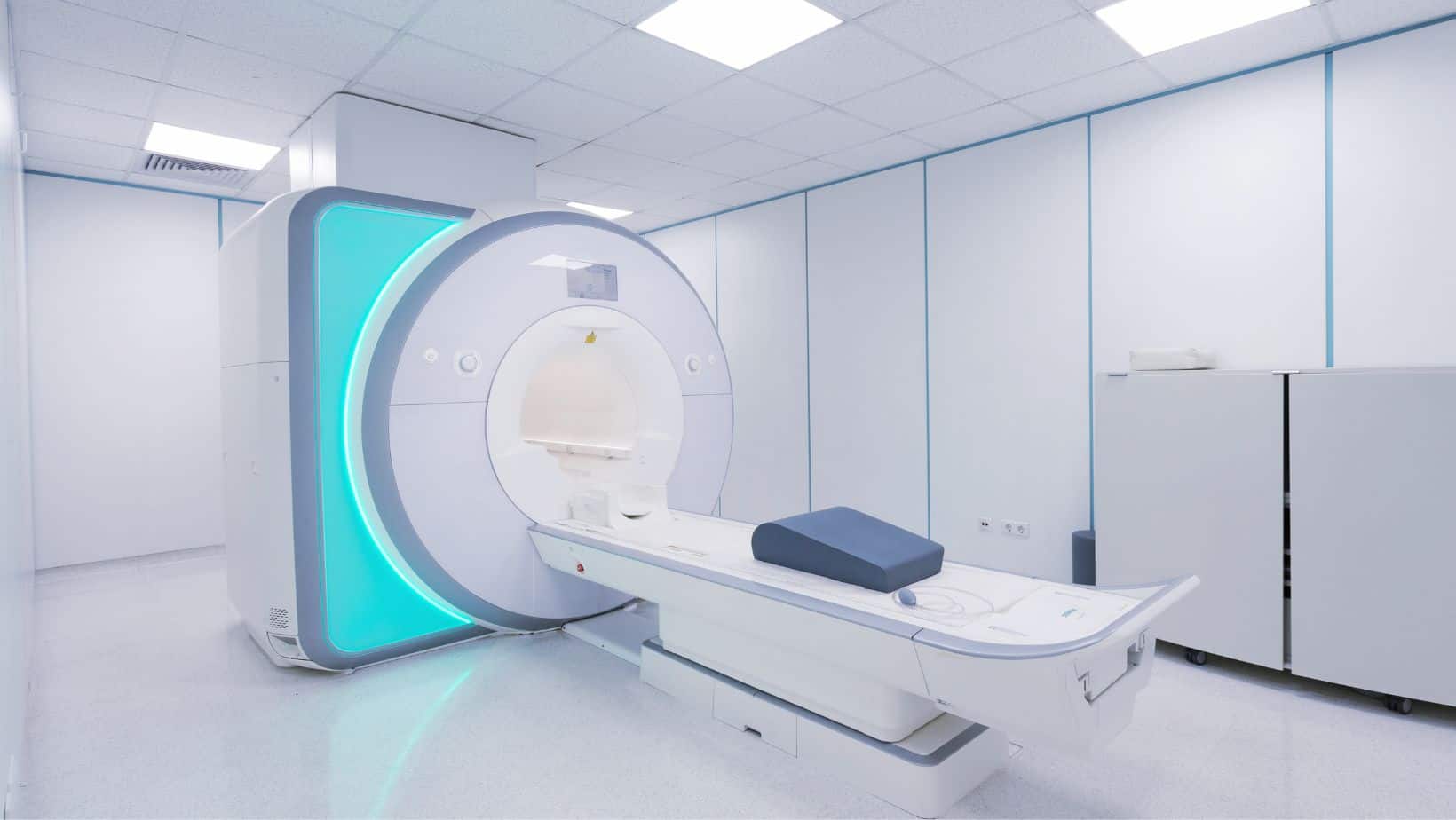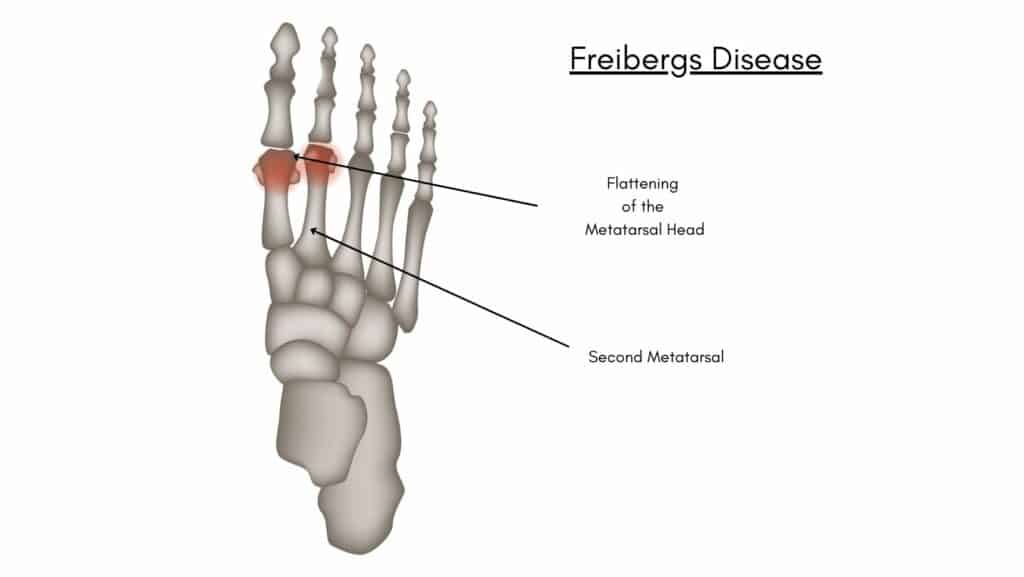Read More >
- Anterior Ankle Impingement - July 24, 2022
- Tarsal Coalition - October 12, 2022
- Sural Nerve Pain - October 3, 2022
What is Freiberg Disease?
Freiberg Disease is a rare condition that most commonly affects the second metatarsal head, but in some cases, it can affect the 2-5th metatarsals. Freiberg Disease results from a change in the structure of the metatarsal head (osteochondritis) where instead of having a rounded head, it begins to flatten with sharper edges.
As a result, the change of position can cause pain, inflammation and swelling in the forefoot. It is more common in athletic adolescent females than men, and we believe it develops during childhood and teenage years but may not become symptomatic until later in life. It is present bilaterally in 10% of cases.
Symptoms
Freiberg Disease can cause pain on the plantar surface of the forefoot when standing or walking. There may be slight swelling on the forefoot, while symptoms often worsen when wearing high heels or carrying out impact activities such as jumping or running.
The patient may demonstrate a visible limp, especially in the younger patient, and the surrounding metatarsal heads may have stiffness.

Causes
The exact cause of Freiberg Disease remains uncertain. Still, it is believed to result from repetitive strain on the metatarsal growth plate that reduces blood supply to the metatarsal head and, in turn, avascular necrosis.
Other causes include direct trauma to the area, foot mechanics or diabetes.
Diagnosis
A Physical Therapist can conduct a clinical assessment to identify the location of pain and the patient’s symptoms; the clinician will likely refer the patient for an x-ray.
An X-ray is usually sufficient to confirm the diagnosis. Still, in some instances, an MRI may be required to rule out any other soft tissue injuries in the forefoot contributing to the pain.

Stages of Freiberg Disease:
-
Stage 1: A fissure fracture in the ischemic epiphysis. The cancellous bone at the fracture appears sclerotic. Compared with the adjacent metaphysis, the epiphysis shows the absence of blood supply.
-
Stage 2: Absorption of cancellous bone occurs proximally. The central cartilage sinks into the head while the margins and plantar cartilage remain intact. This process results in an altered contour of the articular surface.
-
Stage 3: Further absorption occurs, and the central portion sinks deeper, creating larger projections on either side. The plantar cartilage remains intact.
-
Stage 4: The central portion continues to sink, so the plantar hinge gives way. The peripheral projections fracture and fold over the central portion. Restoration of the anatomy is no longer possible.
-
Stage 5: The final stage shows arthrosis with flattening and deformity of the metatarsal head. Only the plantar portion of the metatarsal cartilage retains the original contour of the head. Loose bodies have reduced in size, and the metatarsal shaft is thickened and dense.
Treatment
Treatment for Freiberg Disease varies depending on the severity of the symptoms. In mild cases, Physical Therapy is appropriate, which involves insoles to offload the affected metatarsal and provide additional cushioning. A discussion around appropriately sized footwear that are stable and cushioned is beneficial.
Strengthening and mobility exercises are beneficial to optimise the mechanics of the foot and ankle, reducing the force being placed through the forefoot alongside anti-inflammatories.
If conservative treatment is unsuccessful, then operative treatment is appropriate. There are numerous surgical options, such as arthroscopy or debridement, but these decisions should be discussed with your Foot and Ankle Orthopaedic consultant.

How long does Freiberg’s Disease take to heal?
Freiberg's disease takes approximately 4-6 weeks to heal after wearing a walker boot in stages 1-3 while stages 4 and 5 often need surgical intervention.
Can you get Freiberg’s Disease in both feet?
In most cases, Freiberg Disease occurs in one foot only, but it is possible to get Freiberg’s Disease in both.
Can I run with Freiberg’s disease?
You can continue to run with mild symptoms of Freiberg’s disease. For more severe symptoms of Freiberg’s disease, we recommended having treatment under the care of a medical professional. Most cases return to running after successful treatment.
This is not medical advice. We recommend a consultation with a medical professional such as James McCormack. He offers Online Physiotherapy Appointments weekly.


